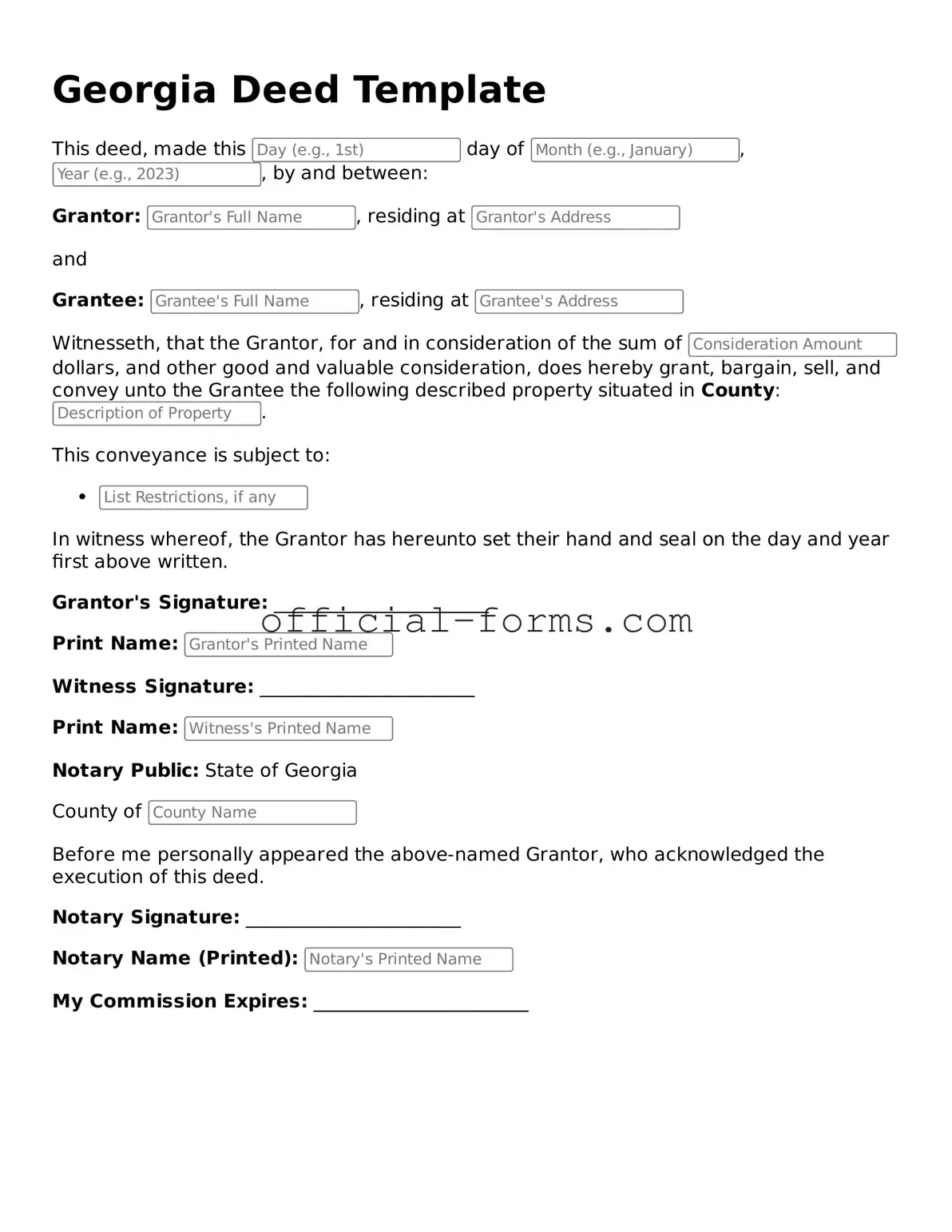The Georgia Deed form is an essential document used in real estate transactions throughout the state of Georgia. This form serves as a legal instrument that facilitates the transfer of property ownership from one party to another. It includes vital information such as the names of the grantor (the person selling or transferring the property) and the grantee (the person receiving the property), along with a detailed description of the property being conveyed. Additionally, the form outlines any conditions or restrictions related to the transfer, ensuring that both parties understand their rights and obligations. Notably, the Georgia Deed form must be signed, notarized, and recorded with the county clerk to be legally binding. Understanding the nuances of this document is crucial for anyone involved in a property transaction, whether you are a buyer, seller, or real estate professional.
